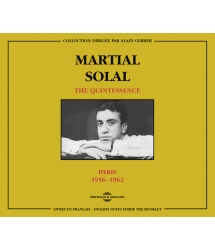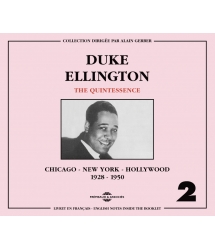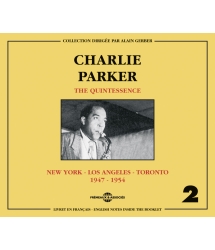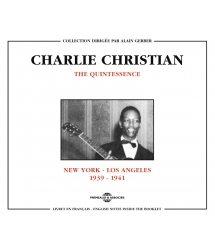- Our Catalog
- Philosophy
- Philosophers of the 20th century and today
- History of Philosophy (PUF)
- Counter-History and Brief Encyclopedia by Michel Onfray
- The philosophical work explained by Luc Ferry
- Ancient thought
- Thinkers of yesterday as seen by the philosophers of today
- Historical philosophical texts interpreted by great actors
- History
- Books (in French)
- Social science
- Historical words
- Audiobooks & Literature
- Our Catalog
- Jazz
- Blues
- Rock - Country - Cajun
- French song
- World music
- Africa
- France
- Québec / Canada
- Hawaï
- West Indies
- Caribbean
- Cuba & Afro-cubain
- Mexico
- South America
- Tango
- Brazil
- Tzigane / Gypsy
- Fado / Portugal
- Flamenco / Spain
- Yiddish / Israel
- China
- Tibet / Nepal
- Asia
- Indian Ocean / Madagascar
- Japan
- Indonesia
- Oceania
- India
- Bangladesh
- USSR / Communist songs
- World music / Miscellaneous
- Classical music
- Composers - Movie Soundtracks
- Sounds of nature
- Our Catalog
- Youth
- Philosophy
- News
- How to order ?
- Receive the catalog
- Manifesto
- Dictionnary











- Our Catalog
- Philosophy
- Philosophers of the 20th century and today
- History of Philosophy (PUF)
- Counter-History and Brief Encyclopedia by Michel Onfray
- The philosophical work explained by Luc Ferry
- Ancient thought
- Thinkers of yesterday as seen by the philosophers of today
- Historical philosophical texts interpreted by great actors
- History
- Books (in French)
- Social science
- Historical words
- Audiobooks & Literature
- Our Catalog
- Jazz
- Blues
- Rock - Country - Cajun
- French song
- World music
- Africa
- France
- Québec / Canada
- Hawaï
- West Indies
- Caribbean
- Cuba & Afro-cubain
- Mexico
- South America
- Tango
- Brazil
- Tzigane / Gypsy
- Fado / Portugal
- Flamenco / Spain
- Yiddish / Israel
- China
- Tibet / Nepal
- Asia
- Indian Ocean / Madagascar
- Japan
- Indonesia
- Oceania
- India
- Bangladesh
- USSR / Communist songs
- World music / Miscellaneous
- Classical music
- Composers - Movie Soundtracks
- Sounds of nature
- Our Catalog
- Youth
- Philosophy
- News
- How to order ?
- Receive the catalog
- Manifesto
- Dictionnary
14 MARS 1961
Quincy Jones
Ref.: FA5765
Label : Frémeaux & Associés
Total duration of the pack : 1 hours 14 minutes
Nbre. CD : 1
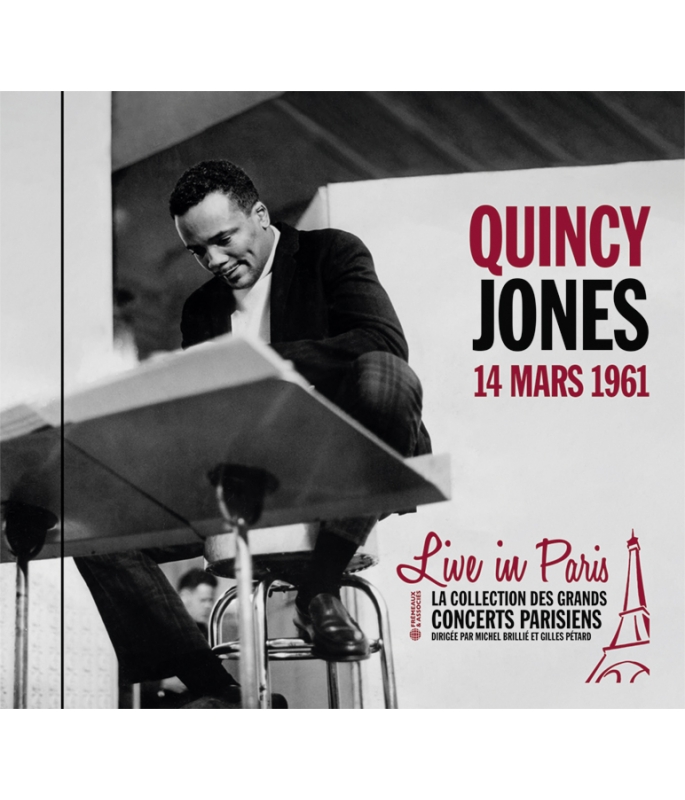
14 MARS 1961
- - * * * * SOULBAG
- - * * * * CLASSICA
- - * * * * JAZZ MAGAZINE
- - FRANCE CULTURE
14 MARS 1961
An arranger of genius, as well as a mentor of 20th century pop, Quincy Jones has been one of the greatest contributors to the modernization of big-band jazz. This previously unreleased album is a 1961 live recording that Quincy made in Paris on his 28th birthday, and it provides astounding evidence of his skills fronting a large orchestra. After his brilliant tour in 1960 (cf. “Quincy Jones Live in Paris, 1960”, FA5460), the young bandleader returned to France with an ‘All-Star’ band that featured some of the finest hardboppers in jazz, notably Freddie Hubbard, Melba Liston, Curtis Fuller, Phil Woods and Sahib Shihab... The Groove, virtuosity and swing are making this opus a definitive recording! Patrick FRÉMEAUX
The Live in Paris collection by Michel Brillié allows listeners to hear previously-unreleased recordings (made at concerts and private- or radio-sessions) by the great 20th stars in jazz, rock & roll and song. These “live” takes, and the artists’ rapport with their audiences, gives these performances an additional soul and sensibility in counterpoint to the rigorous demands of studio recordings. Particular care was taken when restoring the sound of these tapes in order to meet CD standards while preserving the original colours of the period. Patrick FRÉMEAUX & Gilles PÉTARD
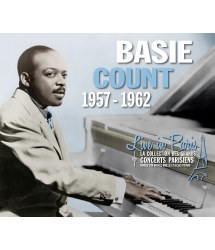
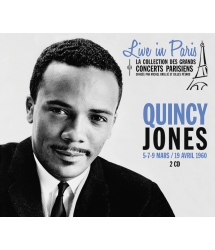
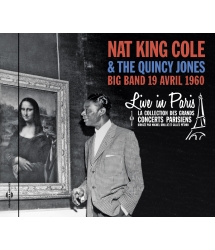
-
PisteTitleMain artistAutorDurationRegistered in
-
1SummertimeQuincy JonesGeorge Gershwin00:02:561961
-
2G'wan TrainQuincy JonesPatricia Brown00:06:201961
-
3SolitudeQuincy JonesDuke Ellington00:03:191961
-
4Stolen MomentsQuincy JonesOliver Nelson00:11:561961
-
5Bess You Is My WomanQuincy JonesGeorge Gershwin00:05:581961
-
6Moanin'Quincy JonesBobby Timmons00:03:141961
-
7Banja LukaQuincy JonesPhil Woods00:10:231961
-
8CaravanQuincy JonesDuke Ellington00:03:271961
-
9The Midnight Sun Will Never SetQuincy JonesQuincy Jones00:05:211961
-
10AfricanaQuincy JonesQuincy Jones00:11:591961
-
11Birth of a BandQuincy JonesQuincy Jones00:07:221961
-
12The Boy in the TreeQuincy JonesQuincy Jones00:02:021961
QUINCY JONES
Live in Paris
14 mars 1961
Quincy Jones
Formidable arrangeur, maître à penser de la musique pop du XXe siècle, Quincy Jones est aussi l’un des grands modernisateurs du jazz en big band. Ce live inédit, enregistré à Paris le jour de son vingt-huitième anniversaire, en est une preuve sidérante. Après sa fulgurante tournée de 1960 (« Quincy Jones Live in Paris 5-7-9 mars / 19 avril 1960 », FA5460), le jeune chef d’orchestre revient en 1961 avec un big band « all stars » qui incorpore notamment la fine fleur du courant hard bop : Freddie Hubbard, Melba Liston, Curtis Fuller, Phil Woods, Sahib Shihab... Maestria, groove et swing font de cet opus un enregistrement absolument incontournable !
Patrick FRÉMEAUX
La collection Live in Paris, dirigée par Michel Brillié, permet de retrouver des enregistrements inédits (concerts, sessions privées ou radiophoniques), des grandes vedettes du jazz, du rock & roll et de la chanson du XXe siècle. Ces prises de son live, et la relation avec le public, apportent un supplément d’âme et une sensibilité en contrepoint de la rigueur appliquée lors des enregistrements studios. Une importance singulière a été apportée à la restauration sonore des bandes, pour convenir aux standards CD tout en conservant la couleur d’époque.
Patrick FRÉMEAUX & Gilles PÉTARD
An arranger of genius, as well as a mentor of 20th century pop, Quincy Jones has been one of the greatest contributors to the modernization of big-band jazz. This previously unreleased album is a 1961 live recording that Quincy made in Paris on his 28th birthday, and it provides astounding evidence of his skills fronting a large orchestra. After his brilliant tour in 1960 (cf. “Quincy Jones Live in Paris, 1960”, FA5460), the young bandleader returned to France with an ‘All-Star’ band that featured some of the finest hardboppers in jazz, notably Freddie Hubbard, Melba Liston, Curtis Fuller, Phil Woods and Sahib Shihab... The Groove, virtuosity and swing are making this opus a definitive recording!
Patrick FRÉMEAUX
The Live in Paris collection by Michel Brillié allows listeners to hear previously-unreleased recordings (made at concerts and private- or radio-sessions) by the great 20th stars in jazz, rock & roll and song. These “live” takes, and the artists’ rapport with their audiences, gives these performances an additional soul and sensibility in counterpoint to the rigorous demands of studio recordings. Particular care was taken when restoring the sound of these tapes in order to meet CD standards while preserving the original colours of the period.
Patrick FRÉMEAUX & Gilles PÉTARD
Quincy Jones Live in Paris
14 mars 1961 / 18h
Par Michel Brillié
De Quincy à la lune
« Si tu veux gagner un million de dollars en jouant du jazz…Commence avec deux millions… » Une amère constatation, sans doute proférée par un de ces nombreux musiciens désabusés qui écument les studios et les clubs de jazz en ce début de décennie sixties. Un conseil que j’aurais du suivre, se dit le jeune Quincy « Delight » Jones, frère de Loyd. Seulement voilà… Dès 19 ans, quand il a rejoint comme trompette le big band de Lionel Hampton, il avait déjà d’autres ambitions. Et lorsque l’opportunité s’est présentée en 1960 de monter un vrai ensemble de jazz pour le premier « blues musical », Free and Easy, la tentation a été trop grande. On connait l’histoire de la déroute du show à Paris et de l’errance européenne de l’orchestre1 – ses « vagabonds » comme Quincy les dénomme - qui s’en sont suivies. Conclusion : un retour à New York à la fin de l’année 1960 avec 145.000 dollars de dettes… En prime, à l’arrivée du transatlantique United States sur les quais de l’Hudson, une fouille au corps minutieuse par le FBI, en recherche de quelques grammes d’herbe. Rebelote : Quincy ressort 5.000 dollars en frais juridiques pour permettre à l’orchestre de continuer à se produire.
Donc le jeune Chicagoan est bien déprimé… Mais the show must go on, et il revoit le line up de sa formation, usée par l’aventure européenne. Il récupère Curtis Fuller, tromboniste de talent, et déniche un « petit jeune de 6 ou 7 ans » comme il le chambre avec malice dans sa présentation sur scène, le trompette Freddie Hubbard. Celui-ci vient tout juste d’enregistrer fin février le nouvel album du saxophoniste Oliver Nelson, The Blues and the Abstract Truth, avec une petite formation de sept musiciens. Il y a dedans un petit bijou, « Stolen Moments ». Ca a l’air de plaire au jeune leader, il va le mettre dans la set-list du tour de l’Europe qu’il prépare pour payer ses factures… Comme toujours, il y aura Zurich, l’Allemagne, et Paris.
En attendant le printemps, petit tour au Birdland, la Mecque du jazz, pour se mettre en appétit. Badaboum. Voila sa mère, Sarah, qui débarque, fait un scandale devant tout le public, et exorcise la « musique du diable » que joue son fils…
Autant dire que la fuite vers l’Europe semble indispensable.
L’Europe, c’est un peu sa vraie patrie. Quincy découvrira d’ailleurs quelques décennies plus tard qu’il a de nombreux ancêtres européens (dont un qui devait apprécier le petit blanc du Berry) – et le petit gars du South Side de Chicago s’est bien policé au contact du vieux continent, et de la France en particulier. De fait il en a découvert l’art de vivre avec son professeur, Eddie Barclay : « Il m’a tout appris sur le vin, la gastronomie…chez lui j’ai vécu des diners incroyables avec l’élite, Aznavour, Brel, Vian, Deneuve… » Il a peaufiné son talent d’arrangeur avec Nadia Boulanger, la professeure de composition de Leonard Bernstein, Barenboïm, Gershwin, Legrand. « N’essaie pas d’écrire des œuvres symphoniques » lui a-t-elle conseillé. « Ton talent est unique, exploite le filon qui tu as déjà creusé. » Et puis, et surtout, il y a Nicole Barclay. C’est elle qui l’a engagé à 24 ans pour devenir pour les Disques Barclay, son directeur musical, arrangeur et chef. Une redoutable femme d’affaires : « Nicole avait tout dans la tête, chiffres, contrats, plan marketing… Tout comme les femmes musiciennes que j’ai engagées, Melba Liston, Patti Bowen, c’était une femme qui pouvait tout faire et laisser les mâles au tapis. »
Au printemps 1958, Quincy est chez Eddie Barclay, quand le téléphone sonne. Au bout du fil, le bureau de la princesse Grace de Monaco. A sa demande, Frank Sinatra vient faire un gala exceptionnel au Sporting Club de Monte Carlo au profit de l’Unicef. Sinatra désire que Quincy soit mandaté pour diriger l’orchestre. « On est monté dans le premier train avec cinquante-cinq musiciens que connaissait Eddie, dont Kenny Clarke, Stephane Grapelli, Lucky Thompson. » Quincy est dans ses petits souliers. « J’étais totalement aux anges de pouvoir le rencontrer et d’apprendre sa conception de l’orchestre, des arrangements, du feeling… »
« Ole Blue Eyes » va lui parler deux fois. D’abord quand il arrive au Sporting pour les répétitions, Sinatra lève son regard bleu d’acier sur Jones : « Bon, vous avez écouté mes disques, donc vous savez ce que vous avez à faire. Vous connaissez mon parcours. »
Après la représentation, pendant laquelle il présente son chef d’orchestre sous le nom de …Richard Jones, Sinatra va vers Quincy une deuxième et dernière fois : « il me serre la main, et dit : Bon boulot, Q. Et il est parti. » Ce jour là, Sinatra lui a fourni en prime son surnom : Q.
Retour le 14 mars 1961. Une date spéciale : d’abord c’est la fin de la tournée européenne de deux semaines. Selon l’accord trouvé par Bruno Coquatrix, Daniel Filipacchi et Frank Ténot2, il y a deux concerts prévus à 18h et minuit. Et ensuite, ils ont lieu le jour même de l’anniversaire du chef... 14 mars 33 : Quincy a 28 ans. Les musiciens vont sans doute aller fêter l’évènement chez Gaby & Haynes, le resto soul & black de Pigalle, après le premier concert.
Quincy a renouvelé son personnel de moitié, et son répertoire : outre « Stolen Moments », deux emprunts à Gershwin, deux à Ellington, et des additions « world », « Banja Luka » et « Africana ».
« L’orchestre a fait d’énormes progrès sur le plan de l’homogénéité » écrit Jazz Magazine deux mois plus tard, « il possède une sonorité de sections et d’ensembles éclatante …/… Les musiciens de Quincy sont bien rôdés, l’orchestre a gagné en sûreté et en précision. »
Quincy est là, sur le devant de la scène, il annonce les solistes, tout heureux d’être de retour à Paris. Après cette balade continentale, « je suis surpris que tout le monde soit encore là… » plaisante-t-il. Toujours une blague qui fuse : son batteur Stu Martin se voit affublé tour à tour du surnom de Barberousse, Raspoutine, ou Toulouse Lautrec. « Et moi je suis Eddie Barclay » conclut Jones à la fin de la présentation de l’orchestre.
1961. Ca va être l’année de la transition pour le jeune musicien. Bien sûr, le jazz reste présent. Genius + soul = Jazz, l’album mythique de Ray Charles vient juste de sortir en Février. Il va y avoir le passage au Festival de Newport en juillet ; et l’enregistrement de l’album « Quintessence » en novembre et décembre va clôturer l’année. Sous la protection amicale d’Irving Green, le président de Mercury Records, il se met au boulot, comme arrangeur tout terrain. Il va produire des artistes plus mainstream, tels Brook Benton ou Peggy Lee (chez Capitol).
Et puis il y a le morceau qui conclut les concerts du 14 mars, prémonitoire de la suite de l’époustouflante carrière de Q. C’est la musique d’un film suédois, « The boy in the Tree » : son premier score de musique de film. En 59, Quincy n’avait pas pu fournir, faute de temps, la musique de « Lola » de Jacques Demy. Mais bon camarade, il avait recommandé un copain talentueux : Michel Legrand. Par la suite, Quincy fera rentrer le jazz et la musique black dans le cinéma américain – ce qui était tabou jusqu’alors. Il va écrire la fabuleuse musique du « Prêteur sur gages » de Sidney Lumet. Parmi la bande de « requins de studio » assemblée pour l’enregistrement, il y a Freddy Hubbard et Oliver Nelson. Puis « Dans la chaleur de la nuit » de Norman Jewison, avec son pote d’enfance de Seattle… Ray Charles.
Ce « Boy in the Tree » marque un tournant. “J’avais femme et enfant, et j’ai décidé à mon retour de New York que j’allais me trouver un vrai job, pour la première fois en tant qu’adulte. » Films, tubes pour ados (« Its my Party » de Leslie Gore, N°1 au Billboard en 63), il faudra sept ans à Mister Q pour remonter financièrement la pente.
Et plus de vingt années pour atteindre les étoiles, quand Quincy Jones produira l’album du siècle, « Thriller » de Michael Jackson.
Vingt ans pour le cosmos, mais moins de dix pour la lune.
« J’ai eu la chance de rencontrer Buzz Aldrin, » écrit –il. « L’un des premiers astronautes en 1969 de la mission Apollo 11 sur la lune. Il m’a révélé qu’il passait dans le vaisseau spatial le disque de la chanson « Fly me to the Moon » que j’avais enregistré avec Frank Sinatra en 64, avec le big band de Count Basie. C’était vraiment génial d’avoir orchestré la première chanson jouée dans l’espace. »
Les citations de Quincy Jones sont toutes extraites de son autobiographie, « Q: The Autobiography of Quincy Jones » Doubleday, New York 2001.
Michel BRILLIÉ
© Frémeaux & Associés 2020
1 Quincy Jones, Live in Paris, 5-7-9 Mars & 19 avril 1960, coffret 2 Cds, Frémeaux & Associés, FA 5460, 2014.
2 Cela permettait à Coquatrix de conserver son spectacle de 21h.
Quincy Jones Live in Paris
March 14th, 1961 / 6 PM
By Michel Brillié
From Quincy to the moon
“If you want to make a million dollars playing jazz... Start with two million...” This bitter observation was probably made by one of the many disillusioned musicians who roamed around recording studios and jazz clubs at the beginning of the sixties. Quincy “Delight” Jones, brother of Loyd , must have pondered about that piece of advice . And still... When he was 19, as he joined Lionel Hampton’s big band as a trumpet player, he already had other ambitions. And when the opportunity arose in 1960 to put together a real jazz ensemble for “Free and Easy”, the first “blues musical” ever, it was too tempting for him. The story of the show’s disarray in Paris has already been written, as well as the wandering in Europe of the orchestra - his “vagrants” as Quincy called them - which followed1. In conclusion, a trip back to New York at the end of 1960 with $ 145,000 in debt… As a bonus, upon the arrival of the United States transatlantic at the Hudson River pier, the gang went through a thorough body search by the FBI, looking for a few grams of pot. Same story again: Quincy shelled out $ 5,000 in legal fees to allow the orchestra to continue performing.
So the young Chicagoan was very depressed... But the show must go on, and he put back together a new line-up of musicians, since many had been worn out by the European adventure. He recruited Curtis Fuller, a talented trombonist, and unearthed a “little youngster of 6 or 7 years old” as he mischievously teased him in concert’s band introduction, trumpet player Freddy Hubbard. He had just recorded in February saxophonist Oliver Nelson’s new album “The Blues and the Abstract Truth”. A real musical gem was included in it: “Stolen Moments”. The young leader liked that enough to add it to the set-list of the forthcoming tour of Europe, much needed to pay his bills... As always, there would be Zurich, Germany, and Paris.
While waiting for spring to come, Jones and his band dropped by the Birdland, the Mecca of jazz, to get things going. But lo and behold, here came Sarah, Quincy’s mother. She stormed the joint making a fuss in front of the audience, exorcising the “music of the devil” that his son was playing.
One might as well make a necessary retreat to Europe.
To Quincy Jones, Europe was then his true homeland. Q would discover a few decades later that he had many European ancestors (including one who must have enjoyed the “Quincy” , a white wine from Berry).The Dude from the South Side of Chicago had been well trained by the old continent, and by France in particular. In fact he had discovered the art of living with his mentor, music mogul /womanizer Eddie Barclay: “He taught me all about food, wine, and dining .../… he gave fabulous dinners where we’d dine with the literary and entertainment elite of France: Aznavour, Salvador, Brel, Vian, Deneuve… ”He had refined his talent as an arranger with Nadia Boulanger, the composition professor of Bernstein, Barenboïm, Gershwin, Legrand. “Learn your skills but forget about great American symphonies,” she advised him. “You already have something unique and important. Go mine the ore you already have. “
And then, and most of all, there was Nicole Barclay. She hired him at 24 to become her music director, arranger and chef at Barclay Records. A formidable businesswoman: “She had everything in her head, the sales figures of each territory, contract commitments, the marketing plan… /… Women like Nicole, trombonist Melba Liston, these were women who could do everything and leave men in the dust.”
In the spring of 1958, Quincy was at Eddie Barclay’s, when the phone rang. At the other end, the office of Princess Grace of Monaco. At her request, Frank Sinatra had been invited to give an exceptional gala at the Sporting Club of Monte Carlo for the benefit of Unicef. And Sinatra wanted Quincy to conduct the orchestra… “We caught a train with fifty-five musicians from Eddie Barclay’s stable, including drummer Kenny Clarke, Stéphane Grapelli, Lucky Thompson.” Quincy felt five inches tall. “I was ecstatic to meet him so I could learn what he wanted in terms of band, arrangement and feeling.”
“Ole Blue Eyes” did talk to him -twice. First when he arrived at the Sporting for rehearsals, Sinatra hit him with his steel blue eyes: “Okay, you’ve heard the records, you know what you have to do. You know where I’m coming from. “
After the performance, during which he introduced his band leader as… Richard Jones, Sinatra spoke to Quincy for a second and last time: “He shook my hand, and said: Yeah, nice job, Q. And he was gone. Poof.” That day, Sinatra gave him an extra gift: his nickname, Q.
To get to back to 1961, March 14 was a special date. First, it was the end of the two-week European tour. According to the agreement reached by the concert promoters, Bruno Coquatrix, Daniel Filipacchi and Frank Ténot, there were two concerts scheduled at 6 p.m. and midnight. And second, they took place on the chef’s birthday. March 14, 1933: Quincy was 28 years old. The musicians would undoubtedly go after the first concert at Gaby & Haynes, the soul & black restaurant in Pigalle, to celebrate the event.
Quincy had renewed its staff by half, and its repertoire: in addition to “Stolen Moments”, there were two pieces by Gershwin, two from Ellington, and new “around the world” numbers, “Banja Luka” and “Africana”.
“The orchestra has made enormous progress in terms of homogeneity” wrote Jazz Magazine a couple of months later, “it has a brilliant sound of sections and ensembles ... / ... Quincy’s men are well oiled, the whole band has gained in reliability and precision.”
Quincy stood there, in the center stage, and announced the soloists, totally happy to be back in Paris. He joked with the Parisian audience that, after this continental tour, “I am surprised that everyone is still there!” At each concert, Q was a real bundle of fun: he referred to his drummer Stu Martin alternatively as Barbarossa, Rasputin, or Toulouse Lautrec. “And I’m Eddie Barclay,” Jones concluded after introducing his staff.
1961 was going to be a transition year for the young musician. Of course, his work in jazz remained present. “Genius + Soul = Jazz”, the legendary album by Ray Charles had just been released in February. Then there would be a performance at the Newport Festival in July, and, in November and December, the recording of the album “Quintessence”. Under the friendly care of Irving Green, the president of Mercury Records, he got to work as an all-terrain arranger. He was to produce more mainstream artists, such as Brook Benton or Peggy Lee (for Capitol).
More significantly, there was the tune that came as a conclusion for the concerts of March 14. It was somehow prophetic of the aftermath of Q’s breathtaking career. The music was from a Swedish film, “The Boy in the Tree”, and it was his first scoring for a movie soundtrack. Back in 1959, due to lack of time, Quincy had been unable to write the music for Jacques Demy’s “Lola”. But being a good pal, he had recommended a talented friend: Michel Legrand. In years to come, Quincy would merge jazz and black music with American cinema – something which was taboo until then. He would write the fabulous music of “The Pawnbroker” by Sidney Lumet. Again, among the band of “studio sharks” gathered for the recording, here were Freddy Hubbard and Oliver Nelson. Then Jones composed “In the Heat of the Night», the Norman Jewison blockbuster, with the title song by his childhood friend from Seattle, Ray Charles.
This “Boy in the Tree” marked a turning point. Quincy: “I had a wife and a child, and I decided upon my return from New York, for the first time in my adult life I went out and got me a real job.” Between films scores and teeny bopper hit songs2, it took Mr. Q seven years to recover financially.
And he would have to wait more than twenty years to reach the stars. 1982 was the year Quincy Jones produced the best-selling album of the century, “Thriller” by Michael Jackson.
Twenty years for the cosmos, but less than ten for the moon:
“I had been inspired by Buzz Aldrin,” he wrote in his autobiographical book, “one of the first astronauts on the moon, who told me that while he was up in space, he’d played the recording of my arrangement of Frank Sinatra cookin’ on “Fly Me to the Moon” with the Count Basie Band. It was a kick to have arranged the first song played in outer space.”
All Quincy Jones quotes are from his autobiography, “Q: The Autobiography of Quincy Jones” Doubleday, New York 2001.
Michel BRILLIÉ
© Frémeaux & Associés 2020
1 Quincy Jones, Live in Paris, 5-7-9 Mars & 19 avril 1960, double Cd box, Frémeaux & Associés, FA 5460, 2014.
2 “Its my Party” by Leslie Gore, reached N° 1 on the Billboard charts in 1963.
Quincy Jones
Live in Paris 14 mars 1961 / 18h
1. Summertime (Ira Gershwin / Edwin DuBose Heyward) 2’56
2. G’wan Train (Patricia Brown) 6’20
3. Solitude (Duke Ellington / Juan Tizol) 3’19
4. Stolen Moments (Oliver Nelson) 11’56
5. Bess You Is My Woman Now (Ira & George Gershwin) 5’58
6. Moanin’ (Bobby Timmons) 3’14
7. Banja Luka (Phil Woods) 10’23
8. Caravan (Irving Mills - Duke Ellington / Juan Tizol) 3’27
9. The Midnight Sun Will Never Set (Henri Salvador / Dorcas Cochran - Quincy Jones) 5’21
10. Africana (Quincy Jones) 11’59
11. Birth of a Band (Quincy Jones) 7’22
12. The Boy in the Tree (Quincy Jones) 2’02
Total time 01:14:17
Recorded by: Europe N°1 Technical Staff
Recording places
Olympia Theater, Paris, France
Produced by: Daniel Filipacchi, Norman Granz & Frank Ténot
Personnel
Quincy Jones arranger, bandleader
French Horn
Julius Watkins
Trumpets
Benny Bailey
Paul Cohen
Rolt Ericson
Freddie Hubbard
Trombones
Curtis Fuller
Åke Persson
David Baker
Melba Liston
Saxophones
Sahib Shihab Baritone
Budd Johnson Tenor
Eric Dixon Tenor
Joe Lopes Alto
Phil Woods alto
Rhythm
George Catlett bass
Leslie Spann Electric Guitar, Flute
Stu Martin drums
Carlos “Patato” Valdes congas
Patricia Brown (Bowen), piano
Dedicated to Claude Boquet, Bill Dubois, Jean Claude,
Philippe Moch, Raymond Treillet and the gang
La collection Live in Paris :
Collection créée par Gilles Pétard pour Body & Soul et licenciée à Frémeaux & Associés.
Direction artistique et discographie : Michel Brillié, Gilles Pétard.
Coordination : Augustin Bondoux.
Conception : Patrick Frémeaux, Claude Colombini.
Fabrication et distribution : Frémeaux & Associés.
